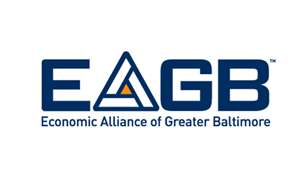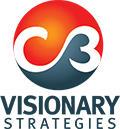Controlling the Narrative
A Comprehensive Communications Strategy.

The Economic Alliance of Greater Baltimore is a regional non-profit that convenes industry, higher education and government to attract and retain business in the greater Baltimore region.
The Economic Alliance of Greater Baltimore is a regional non-profit that convenes industry, higher education and government to attract and retain business in the greater Baltimore region.

In 2015, Baltimore lost control of its narrative following the riots and uprising associated with the death of Freddie Gray while in the custody of police. It was a pivotal moment as greater Baltimore and the state as a whole had experienced increased momentum up to this period with rapid commercial and residential development, increased capital and seed funding, and the growth of an innovative ecosystem that was resulting in new business creation and attraction of a educated talent base.
As national media created an impression of a city on fire and an unsafe environment with little potential for investment, the EAGB worked in partnership with other civic organizations including Downtown Partnership of Baltimore, Visit Baltimore and the Greater Baltimore Committee, to create a strategy to combat the negative stories and to control the narrative about Baltimore.
Under Kristi’s leadership, the EAGB developed a comprehensive communications strategy that would help its member companies, and partner economic development agencies to more effectively engage with potential businesses, entrepreneurs, investors and talent to achieve the region’s economic development goals.
There were three parts to this strategy: earned media, owned media, and events.
Earned Media
The EAGB pitched several stories to target two focus audiences: innovators and business owners. The campaign resulted in coverage in Entrepreneur Magazine and Site Selection Magazine.
Owned Media
A web site called Baltimore Story was created to aggregate and share the stories of the people living and working in Baltimore. The dynamic site included perspectives and experiences from those who came to Baltimore for work or to build a business as well as multi-generational residents. The marketing team attended dozens of events, taking photographs, video and interviewing attendees to capture stories. Additionally, the team worked with universities and businesses to capture testimonials and stories from students and employees. Those stories were then shared through PR as well as paid targeted social media campaigns.
The team also developed and pitched a concept for a new segment on WYPR called Why Baltimore. The show featured Baltimore business owners who shared their stories about why they came to Baltimore or why they committed to building their business in the Baltimore region. The segment helped to engage residents and employees with stories that reaffirmed and provided diverse perspectives on why Baltimore was worth investment, personally or professionally, to combat the negative, baseless stories shared by national media and social media commentators.
Events
The EAGB leveraged its vast, diverse network, and well-attended Annual Meeting to showcase the stories of those who spent their entire lives in Baltimore or were more recent transplants, many of whom were leaders in their businesses and communities, or were successful entrepreneurs. The Annual Meeting, held each fall, was one of Baltimore’s must-attend events with an average attendance of more than 400 business and civic leaders.
At the 2015 Annual Meeting, attendees were surprised with a unique program that featured 30 people from throughout the greater Baltimore region sharing why they live, work or have located their business in the region. The powerful program represented Baltimore’s diverse population and innovative ecosystem.
The campaign, in conjunction with the efforts of partner organizations that each created and managed campaigns such as Visit Baltimore’s #MyBmore campaign to attract visitors and conventions, resulted in a shift in perception of Baltimore, helping to maintain and grow the number of people relocating to, visiting, or investing in businesses and communities throughout the greater Baltimore region.
